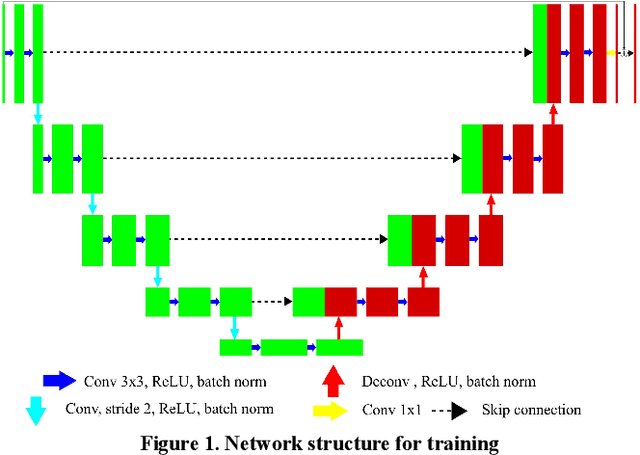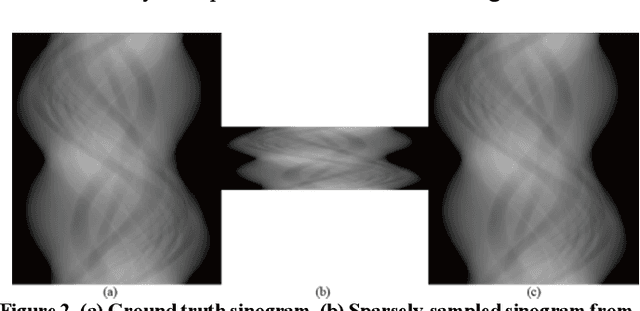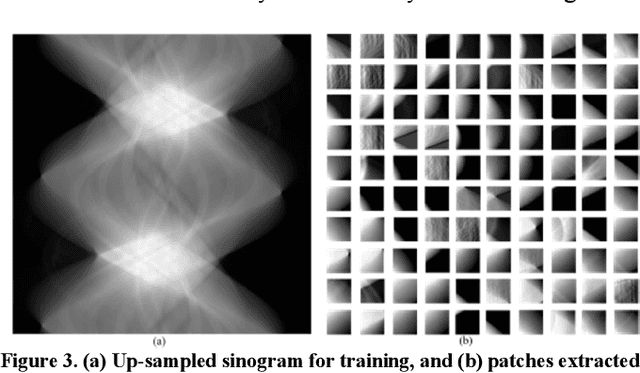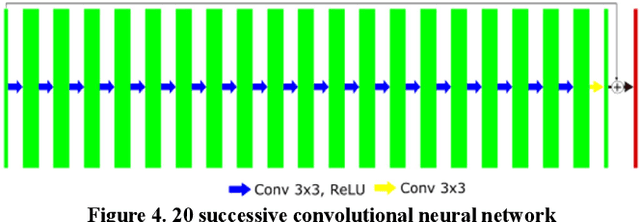Jongha Lee
Learning an Ensemble Token from Task-driven Priors in Facial Analysis
Jul 02, 2025Abstract:Facial analysis exhibits task-specific feature variations. While Convolutional Neural Networks (CNNs) have enabled the fine-grained representation of spatial information, Vision Transformers (ViTs) have facilitated the representation of semantic information at the patch level. Although the generalization of conventional methodologies has advanced visual interpretability, there remains paucity of research that preserves the unified feature representation on single task learning during the training process. In this work, we introduce ET-Fuser, a novel methodology for learning ensemble token by leveraging attention mechanisms based on task priors derived from pre-trained models for facial analysis. Specifically, we propose a robust prior unification learning method that generates a ensemble token within a self-attention mechanism, which shares the mutual information along the pre-trained encoders. This ensemble token approach offers high efficiency with negligible computational cost. Our results show improvements across a variety of facial analysis, with statistically significant enhancements observed in the feature representations.
Data Augmentation For Small Object using Fast AutoAugment
Jun 10, 2025Abstract:In recent years, there has been tremendous progress in object detection performance. However, despite these advances, the detection performance for small objects is significantly inferior to that of large objects. Detecting small objects is one of the most challenging and important problems in computer vision. To improve the detection performance for small objects, we propose an optimal data augmentation method using Fast AutoAugment. Through our proposed method, we can quickly find optimal augmentation policies that can overcome degradation when detecting small objects, and we achieve a 20% performance improvement on the DOTA dataset.
Simple yet Effective Node Property Prediction on Edge Streams under Distribution Shifts
Apr 01, 2025



Abstract:The problem of predicting node properties (e.g., node classes) in graphs has received significant attention due to its broad range of applications. Graphs from real-world datasets often evolve over time, with newly emerging edges and dynamically changing node properties, posing a significant challenge for this problem. In response, temporal graph neural networks (TGNNs) have been developed to predict dynamic node properties from a stream of emerging edges. However, our analysis reveals that most TGNN-based methods are (a) far less effective without proper node features and, due to their complex model architectures, (b) vulnerable to distribution shifts. In this paper, we propose SPLASH, a simple yet powerful method for predicting node properties on edge streams under distribution shifts. Our key contributions are as follows: (1) we propose feature augmentation methods and an automatic feature selection method for edge streams, which improve the effectiveness of TGNNs, (2) we propose a lightweight MLP-based TGNN architecture that is highly efficient and robust under distribution shifts, and (3) we conduct extensive experiments to evaluate the accuracy, efficiency, generalization, and qualitative performance of the proposed method and its competitors on dynamic node classification, dynamic anomaly detection, and node affinity prediction tasks across seven real-world datasets.
TiGer: Self-Supervised Purification for Time-evolving Graphs
Mar 11, 2025Abstract:Time-evolving graphs, such as social and citation networks, often contain noise that distorts structural and temporal patterns, adversely affecting downstream tasks, such as node classification. Existing purification methods focus on static graphs, limiting their ability to account for critical temporal dependencies in dynamic graphs. In this work, we propose TiGer (Time-evolving Graph purifier), a self-supervised method explicitly designed for time-evolving graphs. TiGer assigns two different sub-scores to edges using (1) self-attention for capturing long-term contextual patterns shaped by both adjacent and distant past events of varying significance and (2) statistical distance measures for detecting inconsistency over a short-term period. These sub-scores are used to identify and filter out suspicious (i.e., noise-like) edges through an ensemble strategy, ensuring robustness without requiring noise labels. Our experiments on five real-world datasets show TiGer filters out noise with up to 10.2% higher accuracy and improves node classification performance by up to 5.3%, compared to state-of-the-art methods.
Full-scale Representation Guided Network for Retinal Vessel Segmentation
Jan 31, 2025



Abstract:The U-Net architecture and its variants have remained state-of-the-art (SOTA) for retinal vessel segmentation over the past decade. In this study, we introduce a Full Scale Guided Network (FSG-Net), where the feature representation network with modernized convolution blocks extracts full-scale information and the guided convolution block refines that information. Attention-guided filter is introduced to the guided convolution block under the interpretation that the filter behaves like the unsharp mask filter. Passing full-scale information to the attention block allows for the generation of improved attention maps, which are then passed to the attention-guided filter, resulting in performance enhancement of the segmentation network. The structure preceding the guided convolution block can be replaced by any U-Net variant, which enhances the scalability of the proposed approach. For a fair comparison, we re-implemented recent studies available in public repositories to evaluate their scalability and reproducibility. Our experiments also show that the proposed network demonstrates competitive results compared to current SOTA models on various public datasets. Ablation studies demonstrate that the proposed model is competitive with much smaller parameter sizes. Lastly, by applying the proposed model to facial wrinkle segmentation, we confirmed the potential for scalability to similar tasks in other domains. Our code is available on https://github.com/ZombaSY/FSG-Net-pytorch.
Inter-linguistic Phonetic Composition (IPC): A Theoretical and Computational Approach to Enhance Second Language Pronunciation
Nov 17, 2024



Abstract:Learners of a second language (L2) often unconsciously substitute unfamiliar L2 phonemes with similar phonemes from their native language (L1), even though native speakers of the L2 perceive these sounds as distinct and non-interchangeable. This phonemic substitution leads to deviations from the standard phonological patterns of the L2, creating challenges for learners in acquiring accurate L2 pronunciation. To address this, we propose Inter-linguistic Phonetic Composition (IPC), a novel computational method designed to minimize incorrect phonological transfer by reconstructing L2 phonemes as composite sounds derived from multiple L1 phonemes. Tests with two automatic speech recognition models demonstrated that when L2 speakers produced IPC-generated composite sounds, the recognition rate of target L2 phonemes improved by 20% compared to when their pronunciation was influenced by original phonological transfer patterns. The improvement was observed within a relatively shorter time frame, demonstrating rapid acquisition of the composite sound.
SLADE: Detecting Dynamic Anomalies in Edge Streams without Labels via Self-Supervised Learning
Feb 19, 2024Abstract:To detect anomalies in real-world graphs, such as social, email, and financial networks, various approaches have been developed. While they typically assume static input graphs, most real-world graphs grow over time, naturally represented as edge streams. In this context, we aim to achieve three goals: (a) instantly detecting anomalies as they occur, (b) adapting to dynamically changing states, and (c) handling the scarcity of dynamic anomaly labels. In this paper, we propose SLADE (Self-supervised Learning for Anomaly Detection in Edge Streams) for rapid detection of dynamic anomalies in edge streams, without relying on labels. SLADE detects the shifts of nodes into abnormal states by observing deviations in their interaction patterns over time. To this end, it trains a deep neural network to perform two self-supervised tasks: (a) minimizing drift in node representations and (b) generating long-term interaction patterns from short-term ones. Failure in these tasks for a node signals its deviation from the norm. Notably, the neural network and tasks are carefully designed so that all required operations can be performed in constant time (w.r.t. the graph size) in response to each new edge in the input stream. In dynamic anomaly detection across four real-world datasets, SLADE outperforms nine competing methods, even those leveraging label supervision.
Deep-neural-network based sinogram synthesis for sparse-view CT image reconstruction
Mar 06, 2018



Abstract:Recently, a number of approaches to low-dose computed tomography (CT) have been developed and deployed in commercialized CT scanners. Tube current reduction is perhaps the most actively explored technology with advanced image reconstruction algorithms. Sparse data sampling is another viable option to the low-dose CT, and sparse-view CT has been particularly of interest among the researchers in CT community. Since analytic image reconstruction algorithms would lead to severe image artifacts, various iterative algorithms have been developed for reconstructing images from sparsely view-sampled projection data. However, iterative algorithms take much longer computation time than the analytic algorithms, and images are usually prone to different types of image artifacts that heavily depend on the reconstruction parameters. Interpolation methods have also been utilized to fill the missing data in the sinogram of sparse-view CT thus providing synthetically full data for analytic image reconstruction. In this work, we introduce a deep-neural-network-enabled sinogram synthesis method for sparse-view CT, and show its outperformance to the existing interpolation methods and also to the iterative image reconstruction approach.
 Add to Chrome
Add to Chrome Add to Firefox
Add to Firefox Add to Edge
Add to Edge